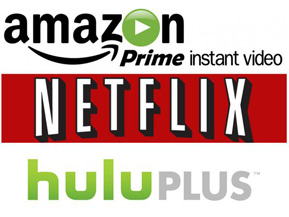|
|
Intermittent Issues: I, For One, Welcome Our New Binary OverlordsBy Ben GruchowNovember 10, 2016
It did not take long at all for Hulu to begin expanding both its content and its barrier to entry; TV shows from ABC and certain cable networks began to find their way online. The CW and Comedy Central also came onboard, albeit by way of portals to the network’s own sites. The tradeoff was that the commercial count and duration expanded, from 30 seconds to 60, then to 90. Hulu Plus also became an offering, exchanging a flat monthly fee for expanded episode access (the free-access version of the site had its current episode roster quickly capped at the previous five episodes in the relevant season) and no commercials. If this and the four other content providers we’ll cover for the remainder of this column fall into a certain niche, Hulu’s is that of the individual who consumes TV shows by volume, on a daily basis. Video and audio quality rank somewhere near the bottom of the pack; although Hulu offers content in HD with H.264, it maxes out at 720p, and it uses Flash instead of HTML5 for its delivery. Hulu cited DRM and compatibility with iOS devices for this decision; this is something that is more applicable in 2010 than 2016. Audio is spottier; by taking a peek at the Hulu Advertising guidelines, audio can only be submitted in 2-channel stereo, at 192 kbps. This works well enough for TV shows, but underwhelmingly so for feature films. And the audio on Hulu’s trailer and promotional materials is disastrous; the source file contains clear instances of EQ being applied to all of the original surround channels, including low-frequency effects. The result is a muddy sound that leads one to believe that they’ve blown out their subwoofer or speakers even at moderate volume levels. This is ancillary, though; the viewer who uses Hulu for all of their streaming-media needs is unlikely to notice much of that compromise.
[ View other columns by Ben Gruchow ]
[ View other Intermittent Issues columns ]
[ Email this column ]
|

|
|
|

|
Friday, November 1, 2024
© 2024 Box Office Prophets, a division of One Of Us, Inc.


